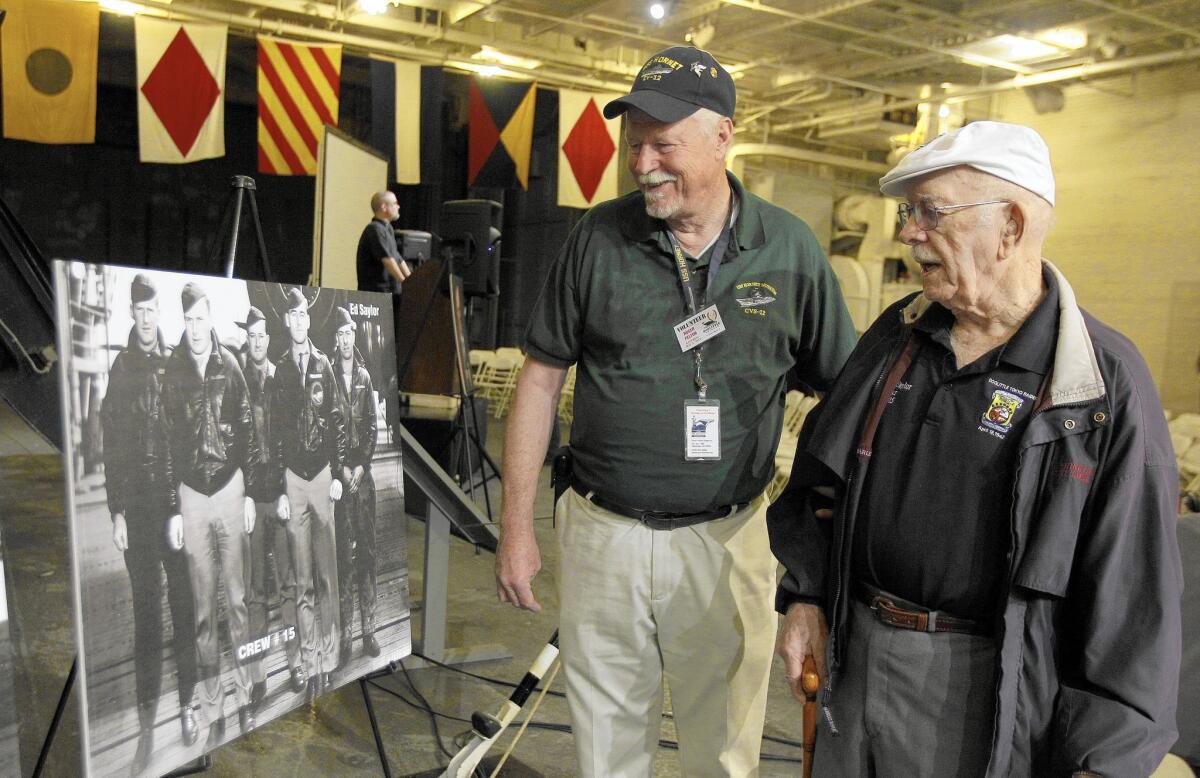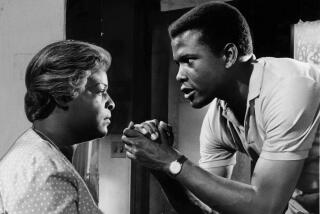Edward Saylor dies at 94; Doolittle Raider who flew risky WWII raid

- Share via
Edward J. Saylor, one of the four remaining Doolittle Raiders who bombed Japanese cities in a bold daylight attack four months after Pearl Harbor, has died. He was 94.
Saylor’s family said his Jan. 28 death at an assisted living facility in Sumner, Wash., was from natural causes.
For years, Saylor talked to students and civic groups about his audacious mission, hinting at its significance with wry understatement.
------------
FOR THE RECORD:
Edward J. Saylor obituary: In the Feb. 5 California section, the obituary of Edward J. Saylor, who was one of four remaining Doolittle’s Raiders from World War II, described the B-25 airplanes used in the famous 1942 attack on Japan as “heavy bombers.” In fact, the B-25 was classified as a medium bomber.
------------
“My reaction when I found out we were bombing Japan from an aircraft carrier was that it was too far to swim back home so we might as well go ahead with it,” he said in 2013, when officials at Eglin Air Force Base in Florida named a hangar after him.
“We just did what we had to do,” he told the New York Times. “It was a job.”
In fact, it was more than that. Many historians see the 1942 U.S. attack as a crucially dispiriting event for a Japanese public steeped in the myth of the empire’s invulnerability. It also was crucial for Americans, who were still reeling from the devastation of Pearl Harbor and other losses in the Pacific at the beginning of World War II.
“It was a psychological raid,” historian and retired colonel C.V. Glines told The Times in 2001. “FDR wanted some real effort to show the Japanese that we could and would fight back.”
Born on March 15, 1920, in Brusett, Mont., Saylor grew up on a cattle ranch. Until he joined the military in 1939, he had never seen a train or a bus, except in the movies. He signed up, he later said, because he was sick of cows.
A sergeant in the Army Air Forces, he heard that Lt. Col. James H. “Jimmy” Doolittle, was looking for 80 crew members on a mission whose top-secret goal he couldn’t disclose. Saylor volunteered.
The secret idea, it turned out, was to launch 16 heavy bombers — B-25s — from the aircraft carrier Hornet 400 miles off Japan.
A master mechanic, Saylor found potentially fatal flaws in his plane’s engine as the Hornet made its way across the Pacific. On a violently pitching deck, he spent days disassembling and re-assembling pieces of the huge machine.
“I didn’t have any parts left when I was done,” he said, “but I wasn’t sure all the parts were in the right place.”
The planes were to take off at night, but Japanese ships spotted the Hornet early on the morning of April 18. This forced Doolittle to send his men up earlier, and farther from Japan, than he had planned.
“I didn’t expect to survive the mission,” Saylor told the Dallas Morning News in 2012. “You just don’t go bomb the enemy in the middle of the day from a low altitude and get away with it.”
Saylor was engineer and gunner on a plane that bombed an aircraft factory and waterfront targets in Kobe, Japan. Fifteen other planes, including one piloted by Doolittle, hit strategic sites in Tokyo and elsewhere.
Eight Raiders wound up in Japanese prison camps, where three of them were executed and one died of malnutrition. Two drowned off the China coast and one died while bailing out.
Running out of fuel, Saylor’s plane ditched in the East China Sea.
Saylor didn’t know how to swim but struggled to a nearby Chinese island on a rapidly deflating life raft. Villagers kept him and his crew mates a step ahead of Japanese patrols, hiding them in a cave, a Buddhist temple and under fetid mats in the hold of a fishing boat. After weeks of perilous travel, they made it to safety.
Saylor received a Distinguished Flying Cross and other honors. The Doolittle Raiders were awarded a Congressional Gold Medal in 2014.
After the war, Saylor remained in the military, retiring from the Air Force as a lieutenant colonel. He was also involved in real estate and construction.
Lorraine Saylor, his wife of 69 years, died in 2011. Saylor’s survivors include his daughter, Charlotte, son Rodney, eight grandchildren and numerous great-grandchildren.
As age and illness whittled down the Raiders, Saylor faithfully attended reunions. In 2013, he and two other Raiders somberly toasted their departed comrades, sipping 1896 Hennessy Very Special cognac from silver goblets inscribed with their names. A fourth man couldn’t make it because of poor health.
The toast had been anticipated for decades. It was Doolittle’s brandy, bottled the year he was born. It was to be opened by the last two Raiders, but that was changed as the men hit their 90s.
At each reunion, the 80 goblets were solemnly arrayed, with an increasing number turned upside down each year to indicate men’s deaths.
“I wonder who the last two will be,” historian Glines once said to Doolittle.
“I wonder who the other guy will be,” the general responded.
Doolittle died in 1993.
Twitter: @schawkins
More to Read
Start your day right
Sign up for Essential California for the L.A. Times biggest news, features and recommendations in your inbox six days a week.
You may occasionally receive promotional content from the Los Angeles Times.







